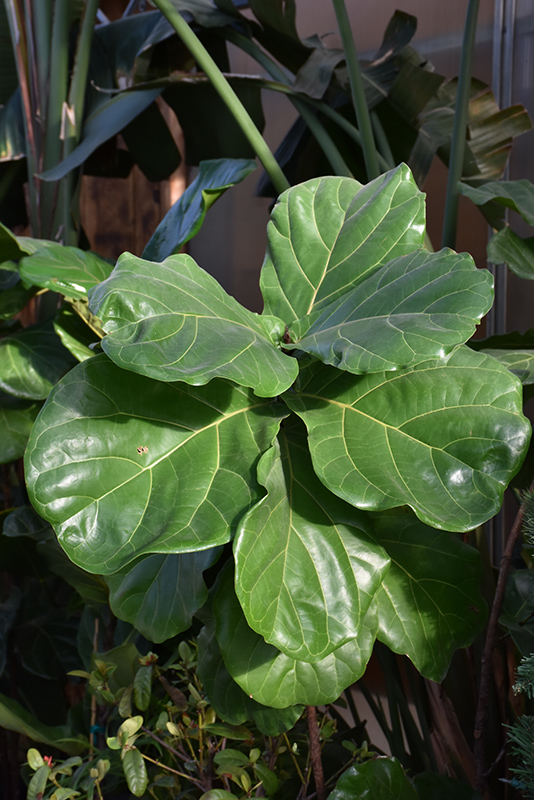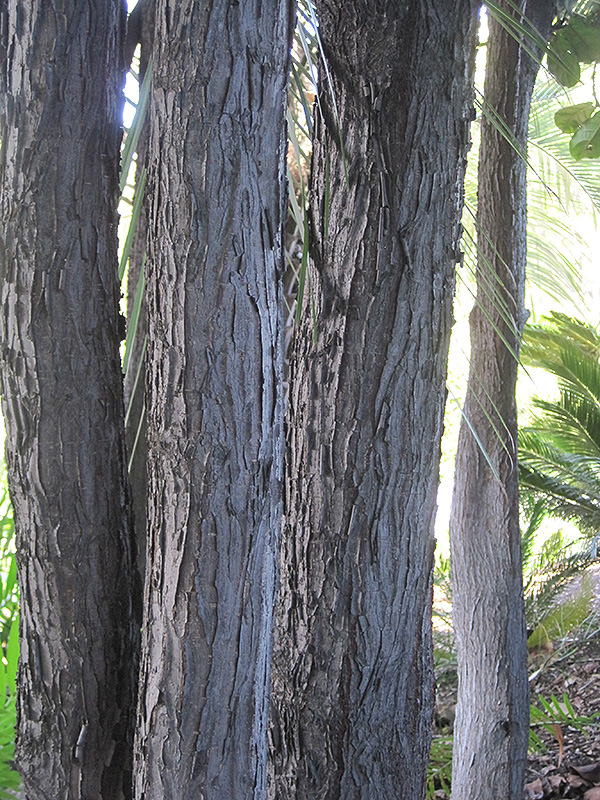Digging deeperPlant Library
Height: 40 feet
Spread: 30 feet
Sunlight:
![]()
![]()
Hardiness Zone: 9
Other Names: Fiddleleaf Fig, Fiddle-leaf Fig
Description:
Primarily grown for foliage, with huge, fiddle shaped leaves; in frost free areas this variety can grow quite large, howerver it can be maintained as a house or patio plant in colder climates; rarely flowers or fruits outside native habitat
Ornamental Features
Fiddle Leaf Fig has attractive green foliage with chartreuse veins on a tree with an oval habit of growth. The large glossy oval leaves are highly ornamental and remain green throughout the winter.
Landscape Attributes
Fiddle Leaf Fig is a multi-stemmed evergreen tree with a shapely oval form. Its average texture blends into the landscape, but can be balanced by one or two finer or coarser trees or shrubs for an effective composition.
This tree will require occasional maintenance and upkeep, and is best pruned in late winter once the threat of extreme cold has passed. It is a good choice for attracting birds to your yard, but is not particularly attractive to deer who tend to leave it alone in favor of tastier treats. Gardeners should be aware of the following characteristic(s) that may warrant special consideration;
- Insects
Fiddle Leaf Fig is recommended for the following landscape applications;
- Accent
- Shade
- Hedges/Screening
Planting & Growing
Fiddle Leaf Fig will grow to be about 40 feet tall at maturity, with a spread of 30 feet. It has a low canopy with a typical clearance of 1 foot from the ground, and should not be planted underneath power lines. It grows at a medium rate, and under ideal conditions can be expected to live to a ripe old age of 100 years or more; think of this as a heritage tree for future generations!
This tree does best in full sun to partial shade. It does best in average to evenly moist conditions, but will not tolerate standing water. It is not particular as to soil type, but has a definite preference for acidic soils, and is able to handle environmental salt. It is highly tolerant of urban pollution and will even thrive in inner city environments. Consider applying a thick mulch around the root zone in winter to protect it in exposed locations or colder microclimates. This species is not originally from North America, and parts of it are known to be toxic to humans and animals, so care should be exercised in planting it around children and pets.
This plant is not reliably hardy in our region, and certain restrictions may apply; contact the store for more information.
A NetPS Plant Finder tool
This Plant Library is for informational purposes only. We may or may not carry the items listed. During many times of the year, we may carry many more plants in our store than are listed in the Plant Library. Please contact us directly at 303-690-4722 or visit our store for current availability and for assistance.


